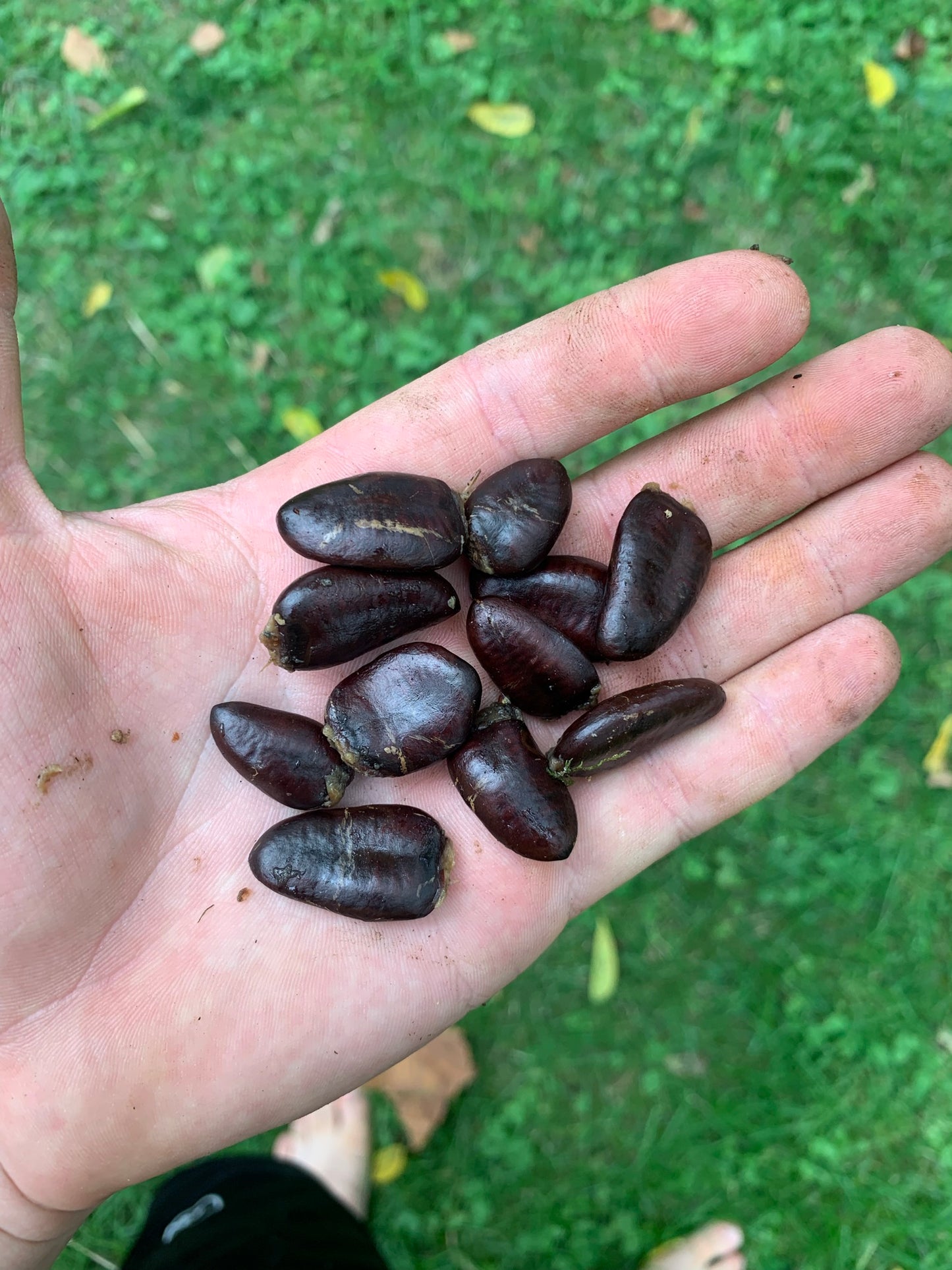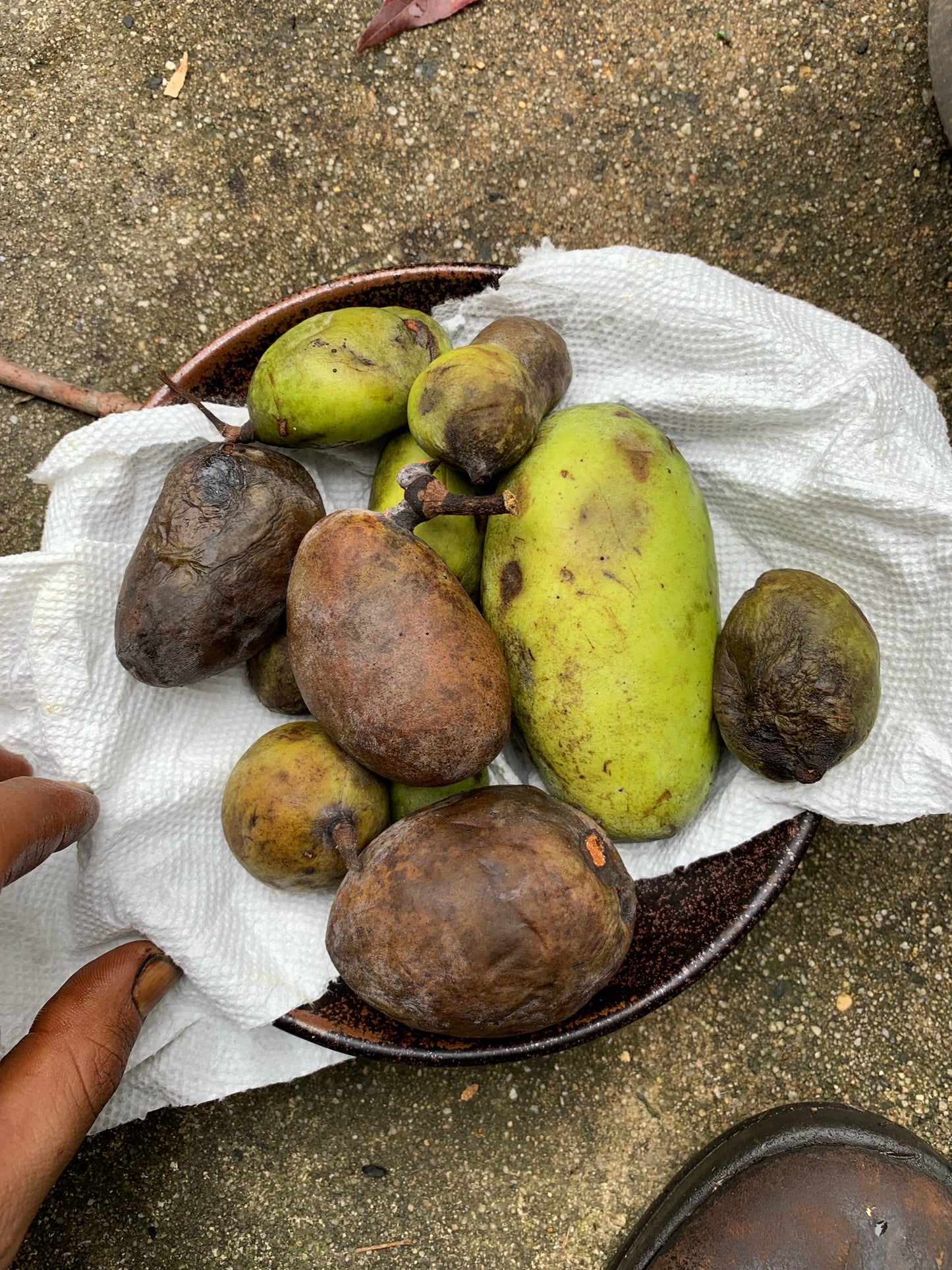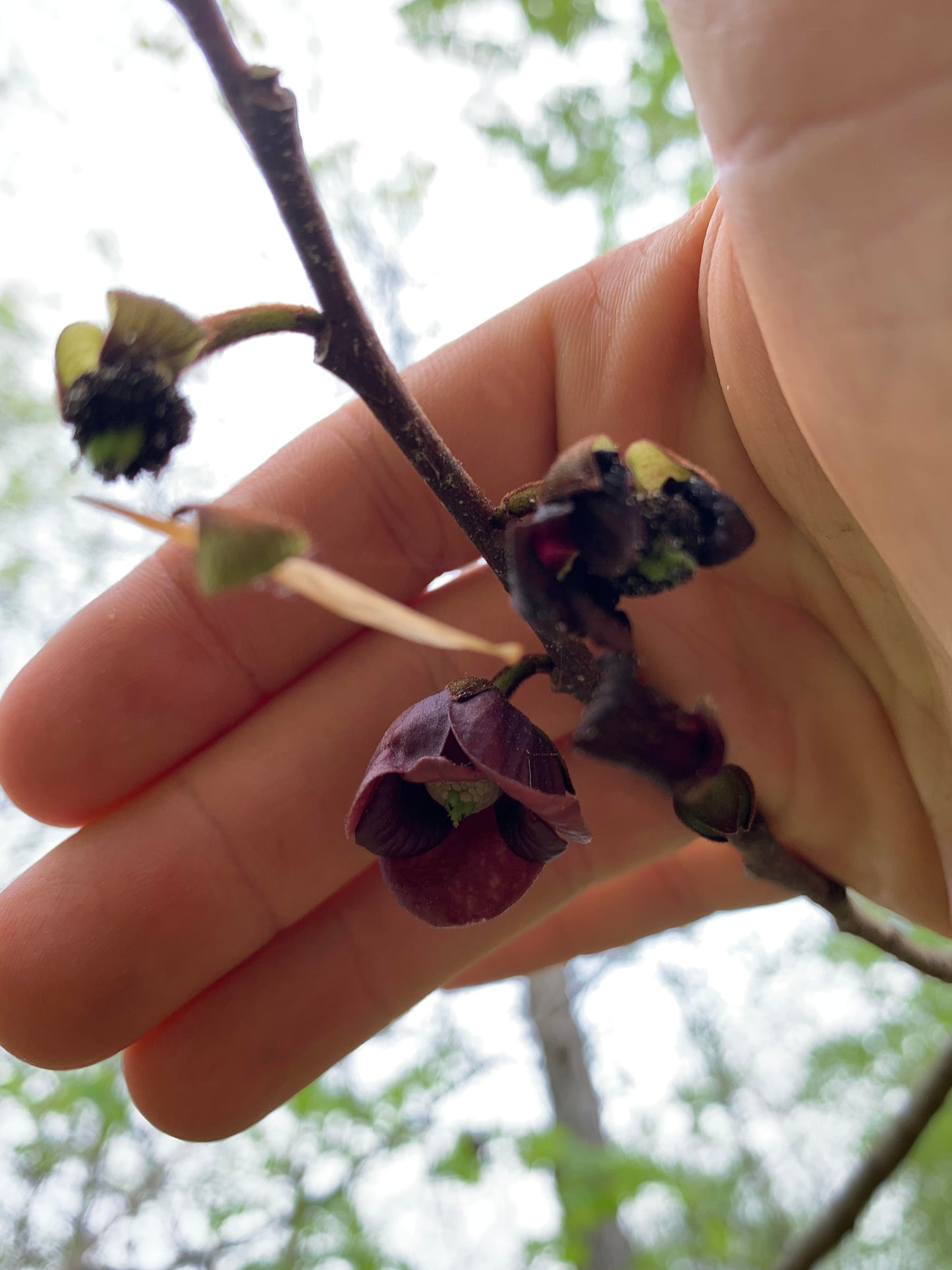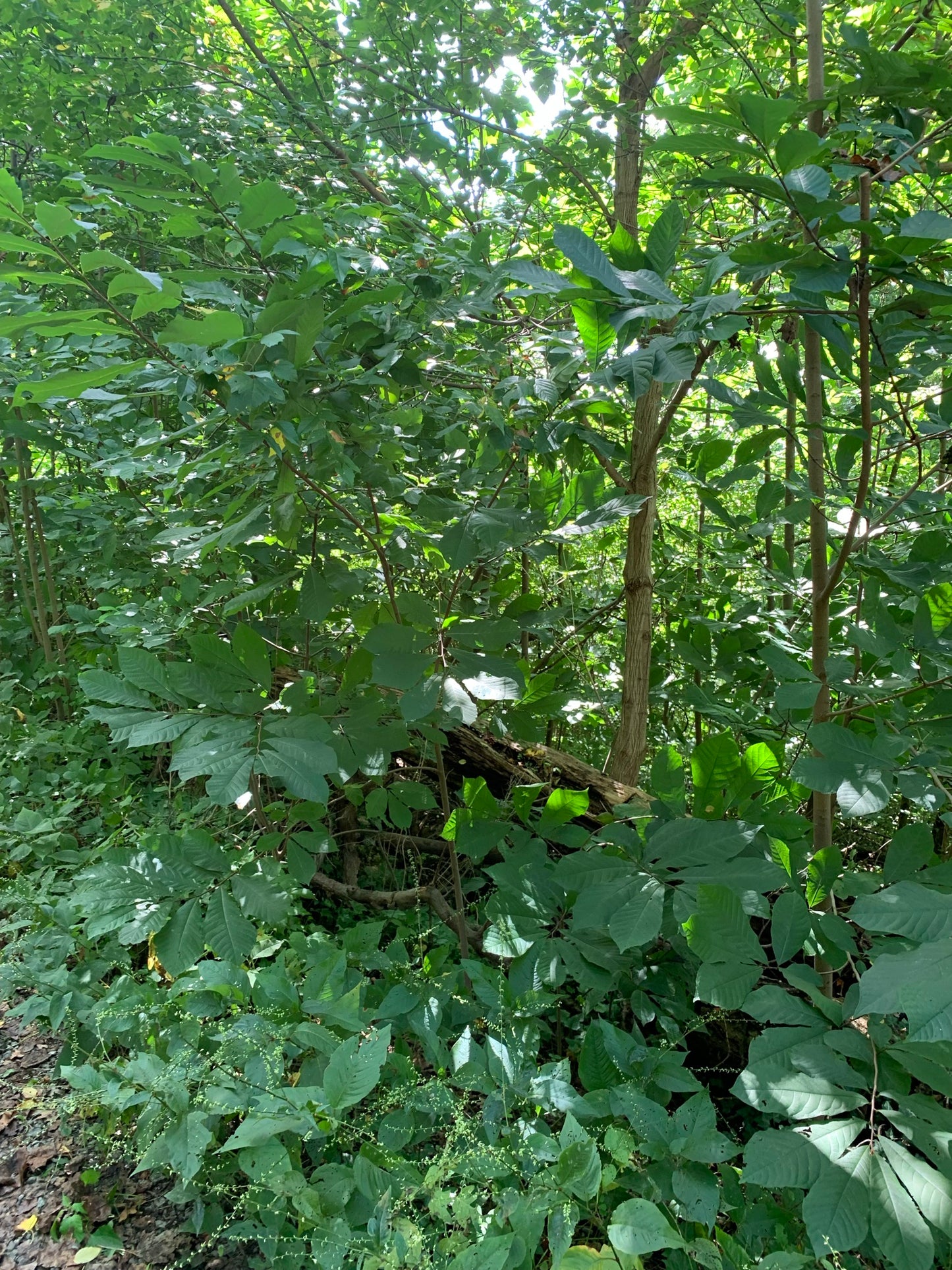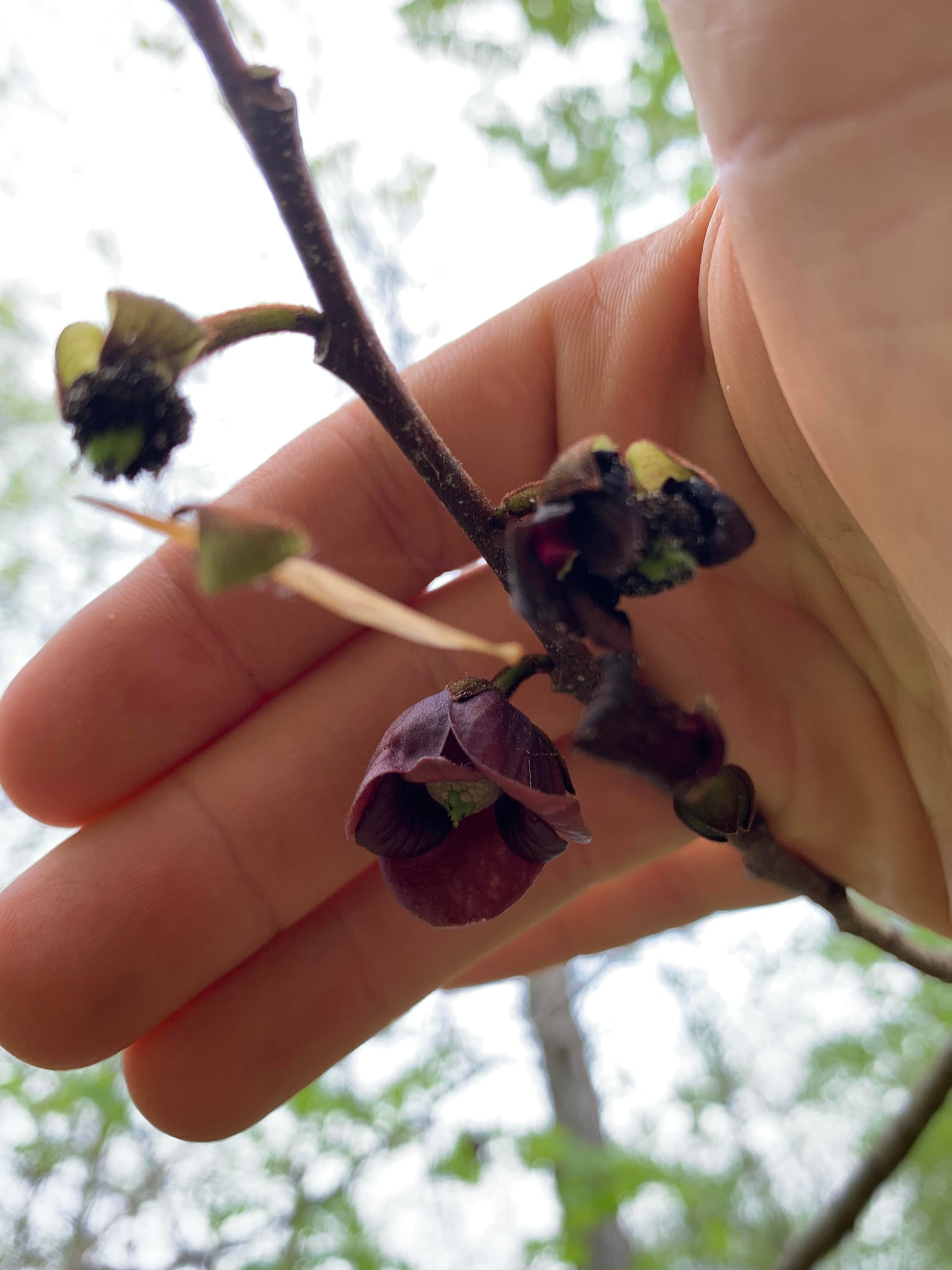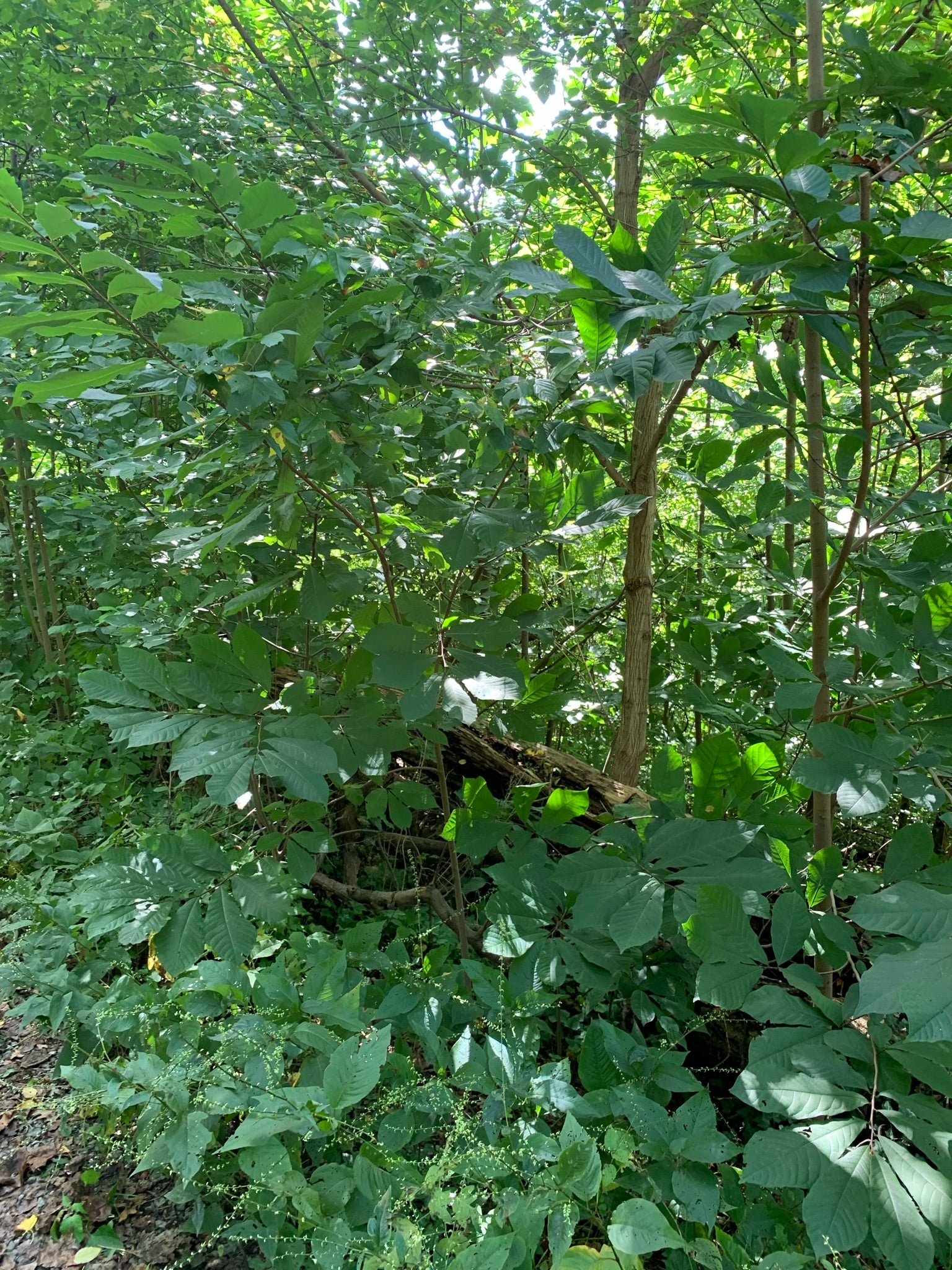Living Soil Tree Farm
Paw Paw Seeds
Paw Paw Seeds
Couldn't load pickup availability
Paw Paw are easy and fun to grow from seed. The most important thing to know with paw paw seed is that the seeds will die if allowed to fully dry out. It is best to store them slightly moist outdoors or in a refrigerator. They do require cold stratification to germinate.
In zone 7 and warmer fall planting of paw paw seed works well. In colder climates fall planting may work although we haven’t tried this ourselves. If fall planting is not an option for any reason, the fridge can effectively mimic winter conditions. We recommend that you place your seed into some form of cold stratification upon receiving them. If you are not fall planting them it is best to sow after danger of a hard frost. Our seed has been kept moist from the time it was extracted from the fruit and are currently in a fridge. They will ship with adequate moisture in the bag. If you keep seeds in the fridge over winter be sure to check periodically for mold growth. Surface mold on the seed can easily be wiped off but if allowed to fester the mold can kill the seed. We like to use plastic zip locks in the fridge. A good moisture content will not leave large drops of water inside the bag. A little bit of visible condensation is okay so long as you do not see large drops of water.
Seed can be sown 0.25”-1.0” deep in soil and covered in 1”-2” of mulch. Paw paw send all of their energy into their root before they send a shoot up above the soil. In our climate they typically send up their first leaves in June, but the seeds sprout and send out roots long before that. When selecting pots or nursery beds keep in mind that they do like to put out a taproot. It has been our experience that they are not sensitive to taproot damage. We have cut the tap roots on young paw paw seedlings while transplanting and not noticed severe stress in the plants.
To learn more about growing trees from seed check out our social media or shoot us an email with your questions.
2025 seed selections:
Wild Paw Paw PA sourced
Seed collected by our friend Mark in Fayette County, PA. Wild paw paw populations can express a wide range of characteristics and generally harbor a lot of potential for adaptability in a changing climate.
If you are not familiar with paw paw here is a little bit about them
Paw paw is a small tree native to the eastern United States. It is primarily grown for its fruit although it also has ornamental value. Humans have planted paw paw trees successfully outside its range in hardiness zones 5 through 8. Although the tree itself is small the fruits can be large. Fruit size varies from tree to tree ranging from the size of an egg to the size of a baked potato. The trees will typically grow up to 35 feet tall and occasionally reach 45 feet. Paw Paws are generally not as wide as they are tall. Trunks typically max out at 8-12 inch diameter.
Animals of all sorts (including humans) will travel great distance to paw paw trees when the fruit are ripe. The fruits are unlike anything that can be found in a grocery store. The taste varies from tree to tree but generally speaking is often described as a mix of banana and mango. The consistency of the fruit is custard like and there are large inedible seeds. The thin skin is also inedible and paw paw are commonly eaten by scooping flesh out with a spoon. The number of seeds ranges from tree to tree. Some paw paws are "free stone" like peaches and have seeds that easily separate from the fruit flesh. Others have seed that clings to fruit flesh making it more challenging to remove seeds.
Breeding work has been done on the paw paw over many thousands of years by native peoples and for a much shorter time by modern institutions. This work has lead to many named cultivars with various beneficial qualities such as larger fruit, less seeds per fruit, improved taste, and regional adaptation. Fruit typically ripens in August through October depending on variety and region. Multiple genetically distinct trees are required for good pollination. Interestingly paw paw are pollinated by beetles. Paw paw will form dense thickets by sending out suckers. If you find a paw paw patch in the wild there is a decent chance all the stems are from one seed originally.
It is important to note that paw paw require shade during their first year but can handle full sun after that if they receive adequate water. More sun will lead to more fruit production. Paw paw can also happily grow in dense shade although fruit production will be greatly decreased. Paw paw trees that are transplanted may also benefit from shade during the establishment period regardless of their age. This can be accomplished with a tomato cage and some burlap or shade cloth.
Paw Paw trees like water. In the wild they are often found growing near streams and rivers. In cultivation they benefit from consistent soil moisture. This can be a result of ground water & rain or irrigation. As always thick mulch is highly recommended. We find that irrigation is most important during establishment in areas with full sun. Paw Paw grow best on well drained soils. Areas near moving water often have well drained soils but they can sometimes have more compacted mucky soils. In the later situation we recommend planting in mounds to improve drainage.
If you find a wild paw paw patch that has valuable qualities we would love to work out a trade for some seed! If you do any paw paw seed collection it is important to keep these seeds moist. Happy hunting!
Materials
Materials
Shipping & Returns
Shipping & Returns
Dimensions
Dimensions
Care Instructions
Care Instructions
